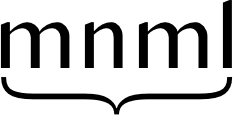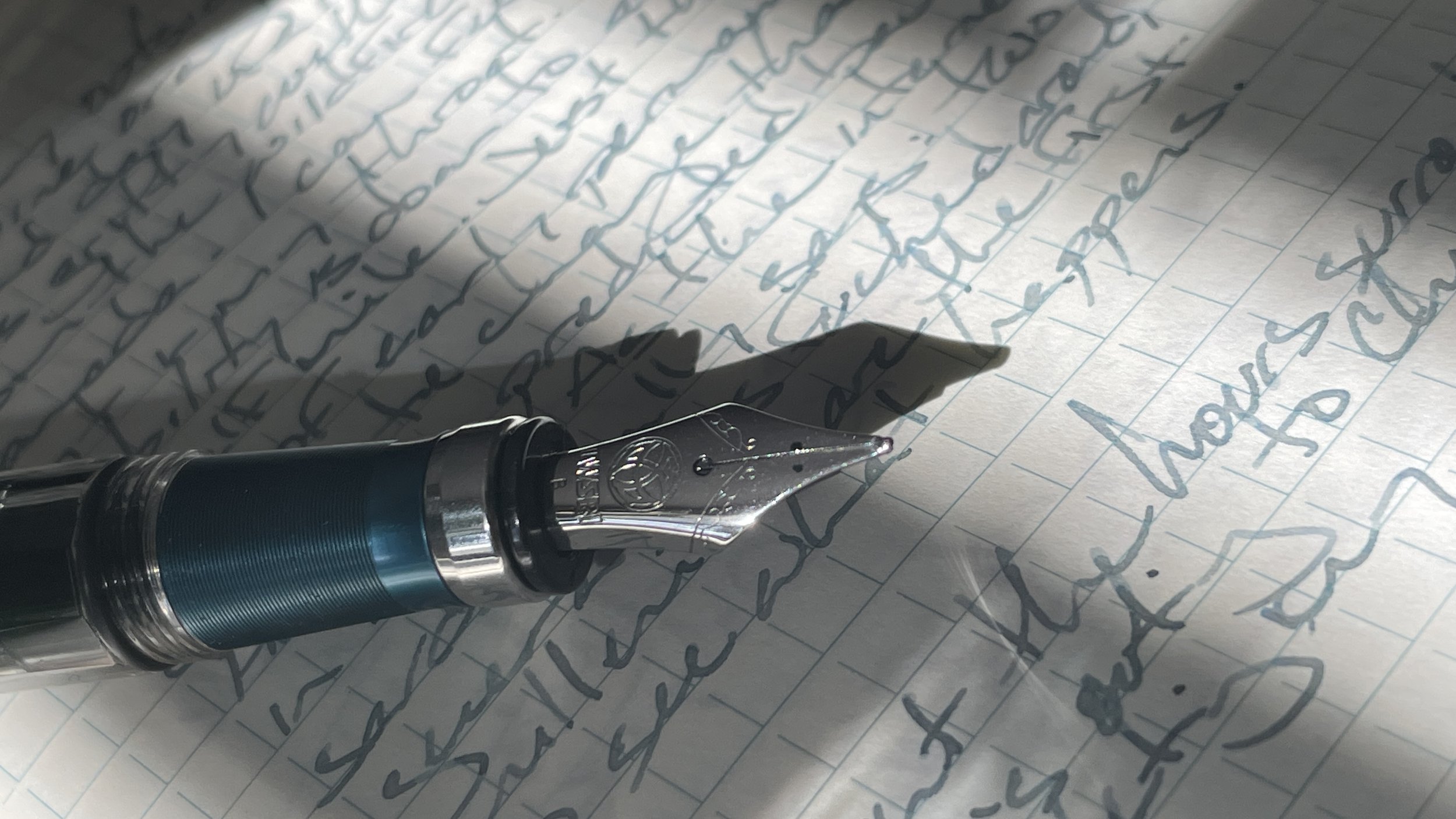Three kind angles on living for ink maximalism
I cycle through my pens and inks frequently. My habit of swapping new pen and ink pairings onto my desk weekly manifests in sequences of partially filled pens.
Pens enter my penvelope each week filled part-way with ink. Many end each week with ink remaining inside. I choose to replace partially filled pens quite often.
And I feel guilty cleaning out a pen that still has ink in it. The value of ink maximalism abounds in our shared online spaces. That intention to squeeze every ml of value out of the expensive colored liquids we fill our pens with seems to resonate with a lot of people.
I’m thinking philosophically as I rethink my mostly-full currently inked for next week. When is a pen empty? Under which circumstances is dumping ink acceptable, or worthwhile, or even admirable? Three angles on the questions jump out at first blush.
Physical emptiness. The sad vacuum of “no more liquid left.” Ink maximalism in practice. A pen that cannot write another word is an empty pen. Keep scribbling until you read true empty.
As I understand it, ink maximalism is grounded in the intention to squeeze every last ml of value out of one’s ink collection. Avoid wasting what I’ve spent hard-earned monies to buy. Unused ink is ink wasted.
Foreshadowing an empty converter with only ink remaining in the feed. A pen is empty when it will likely run dry early in the week. The purpose of inking a pen, in this frame, is to have a writing tool that, well, writes. A pen is only empty when it risks hitting physical emptiness during a meeting or lesson in the first days of the coming week.
A utilitarian approach to measuring emptiness.
The felt need to shake up my writing options. A pen is empty when a nib and ink combination is no longer generating excitement for me. Emptiness is that moment when the draw back to my notebook diminishes. That’s when it’s appropriate to empty out an inked pen. After all, even fabulous inks wax and wane in novelty over time.
The full fill spectrum
I’m clearly still wrestling with ink maximalism. What scenarios lead you to empty out your pens?
This week’s Inked Tines update includes last week’s currently inked writing tools.
Toolset
Pens. My minimal writing last week makes selecting a standout combo challenging.
Jinhao 82 (EF) — 1/3. The pair produced reliable medium-grey lines. Perfect for a daily driving combination. This pen will continue on into next week, too.
Jinhao 82 (Fude) — 1/2. Celadon Cat proved a strong meeting notes accent option. The misty minty hue and broad paint-brush strokes stand out from the dark EF lines of my two other meeting note drivers. Fun, especially when I need to write at near-vertical angles. This pair would dry out if left uncapped in my hand for more than a few seconds.
TWSBI 580-AL (1.1mm Stub) — 1/2. Some pairings are excellent in theory but troublesome in practice. This is one such combo. Hard starts and railroading. I have yet to find a clog. Subsequently used but rarely: journaling and a teaching reflection.
TWSBI 580-ALR (B) — 2/3. The textured section and B nib are a superstar combination. The TWSBI feed is just wet enough to bring out Andromeda’s excellent shading. My go-to journaling pairing last week. No hiccups. Smiles only.
Franklin-Christoph (B Naginata-togi) — 3/4. The unbranded ground nib is fun. I experienced hard starts after a full day of rest. Writes fun, subtly varied B lines once the feed is flooded. I want to give this combo a fair shake next week, especially for longform writing.
Jinhao 82 (EF) — 3/4. I simply didn’t reach for this pairing of a Delike EF nib and Sakuranezumi. I like how the murky purple looks in this nib. The pen, however, lived in my penvelope all week. One meeting’s worth of notes.
Notebooks. Work bujo. Odyssey Neptune 200 (A5). My final series of meetings wound quietly down. I took one page of meeting notes. The school year ends on page 95 of my work notebook. A total of 495 pages of notes and lesson plans and teaching reflections for the 2022-2023 school year.
I used a single Jinhao 82 for each meeting. The EF nibs proved most useful during meetings held at a table. The stable writing surface eased writing with disciplined EF nib line widths.
My old school holds its all-hands faculty meeting in our performing arts center. Stadium seating. Notebooks open on laps. The Jinhao Fude nib offered needed flexibility for my high writing angle.
A tool for every occasion.
Journal. Midori MD (B6 Slim). Last week was another light journaling week. I wrote two one-page entries. Ebb and flow — and forgiveness.
And a sky filled with spice from Dune
I wrote the first entry under the Tatooine-orange skies of the Canadian fires’ ash cloud. I snagged my only stellar-themed ink for the job: Colorverse’s Andromeda. A cool grey-blue color to counteract the skies above.
My TWSBI 580-ALR’s B nib brings out Andromeda’s best qualities. Persistent haloing and strong shading. And the B nib extended words across each line, lending a sense of progress to my short paragraph of reflecting.
Stellar color
The second entry is split across two pen-and-ink pairings. The 1.1 mm Stub lays out a brainstorm on my final week actively working at my old school. Jinhao’s strong fude-clone nib brought Celadon Cat’s misty mint to my short self-analysis sentences. Warm and cool.
Written dry. I had eight writing options last week: six from my currently inked plan and my two newest arrivals. Every pen in last week’s large collection of pairings survived my final week of administrative meetings.
All eight still have magical liquid centers.
Newly inked. I inked both of my new arrivals, each on the day they were delivered. Patience is for during the school year.
The Pilot 743 got a Rikyu-cha for its inaugural inking. Rikyu-cha is a wet, earthy green in this nib. An earthy ink color to match the 743’s deep, near-brown red colorway.
The Pilot 92 got a complimentary orange ink from Pilot’s Iroshizuku lineup: Yu-yake. The FM is soft enough to end lines with small pockets of red-orange shading. The combination is a lovely pairing. And Yu-yake offers a shout of color that last week’s muted blue-stained palette otherwise lacked.
The collection
Incoming / new orders. I received two new Pilot pens from Japanese vendors on Amazon: a Deep Red 743 and a Transparent Blue 92.
My colleagues pulled together to share a departure gift on my last day. I can think of no better way to use their kind gesture than to penable myself. Gratitude for joy.
Oh-ah-oo: much gratitude for the good people at my prior school
The illustrious Inkdependence concurrently began a video series exploring Pilot’s deep bench of nib choices. Target defined. I sought out two Pilot nibs, and two Pilot pen styles, that are new to me.
I already have an EF, a SF and a M nib to tag into my currently inked rotations. So I searched F and FM options.
The 743 is a large converter-based version of Pilot’s popular vacuum-filling 823 model. Mine is equipped with a moderately wet F. Perfect for eventual daily driving.
The 92 is a flat-top iteration of Pilot’s widespread 74 model. A piston-filler flat-topped 74. Exotic. And the FM nib produces moderately wet EF lines on the reverse. Multi-tasker nibs are always welcome on my desk.
Outgoing / trades or sales. Pens entered my collection this week. Pens did not exit my collection — this week. I consider the week a draw.
Currently reading and listening
Fiction. I spent the week journeying from one sample chapter to another. I’m on the search for a new book series. An exploration through the science fiction and fantasy recommendations in Apple’s Books app. I tried five separate book samples, one each weeknight.
I look for tone more than any single author or story type. I used a journal entry last week to hone in on the tone I most-want right now. I’m craving a thoughtful science fiction story. A reflective romp through a big question.
The search continues.
Nonfiction. My new school’s history curriculum is organized conceptually. Students practice applying a core set of concepts to secondary sources like traditional history textbooks and to primary sources. A structure that gives me the warm-and-fuzzies.
My first task is to read through the materials and find my intellectual footing with the ideas that comprise the curriculum’s foundation. The department keeps our conceptual materials on a shared drive.
I’m presented with a choice.
I can print the materials out and turn to my go-to analog reading strategies. Sharpen my Mitsubishi pencil and dust off my Mildliners. Reading-made-fun. A process resulting in reading notes that will need to be logged virtually as new tags. Tags that I can connect to individual readings as they arise during the coming school year.
I can also download each conceptual overview into my GoodNotes app and annotate each on my iPad. I built out GoodNotes to have a fountain pen tool in the colors of Diamine Earl Grey and Kyo-no-oto Aonibi. I set the highlighter tool to the hex colors of Zebra’s Mild Gray and Mild Violet.
So, my digital notes are still written by hand and still rely on my trusty analog reading strategies. However, iPadOS scans my handwriting to automatically identify tags. A system that warrants a dedicated post. A sciency system.
A sciency and pretty system.
Music. The newest Chillhop seasonal playlist released. An old band mate and I had a streaming meetup and watched. The animation tells a neat, enjoyable story.
The music is still percolating with me. Let me know what you all think?








